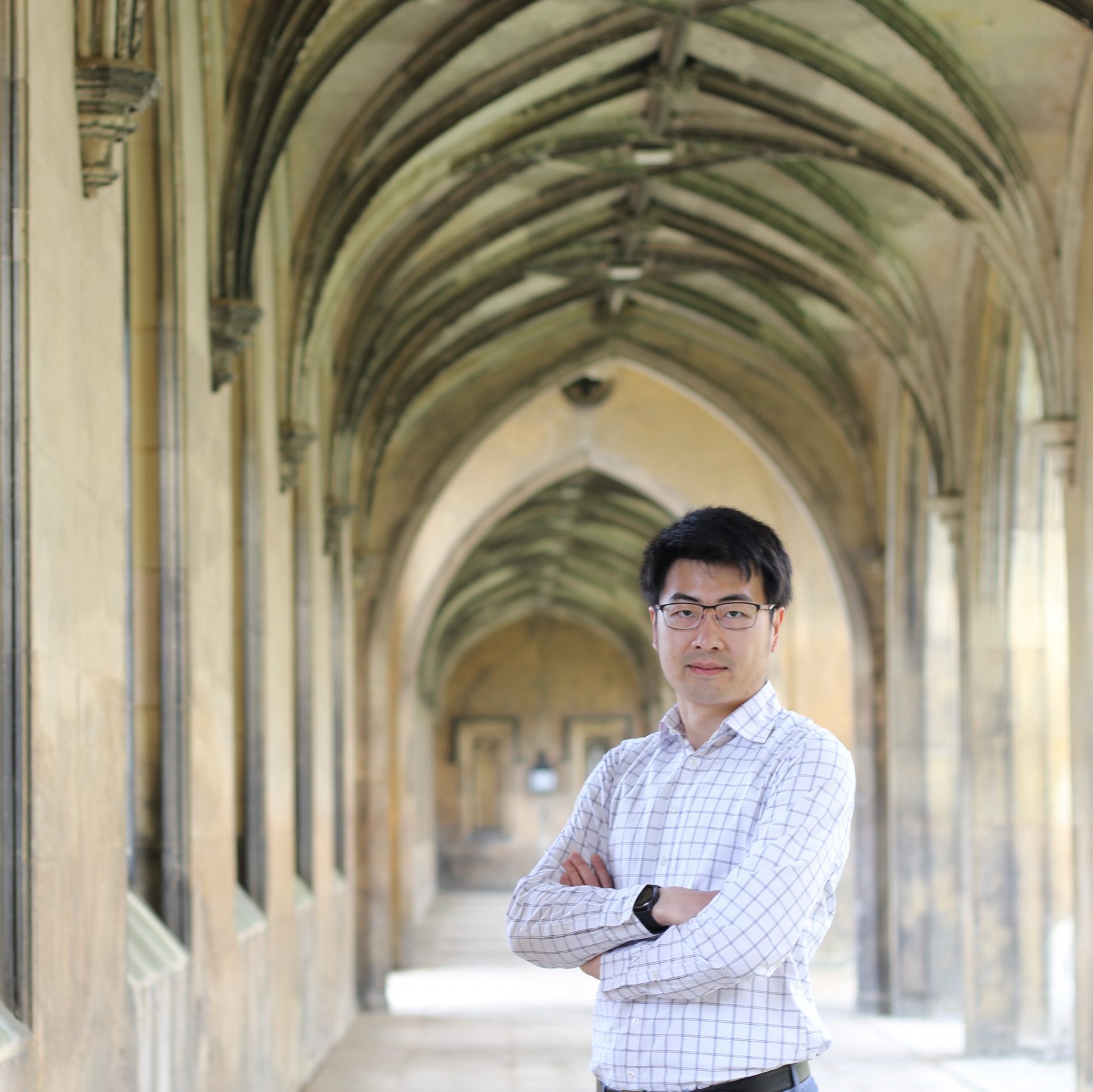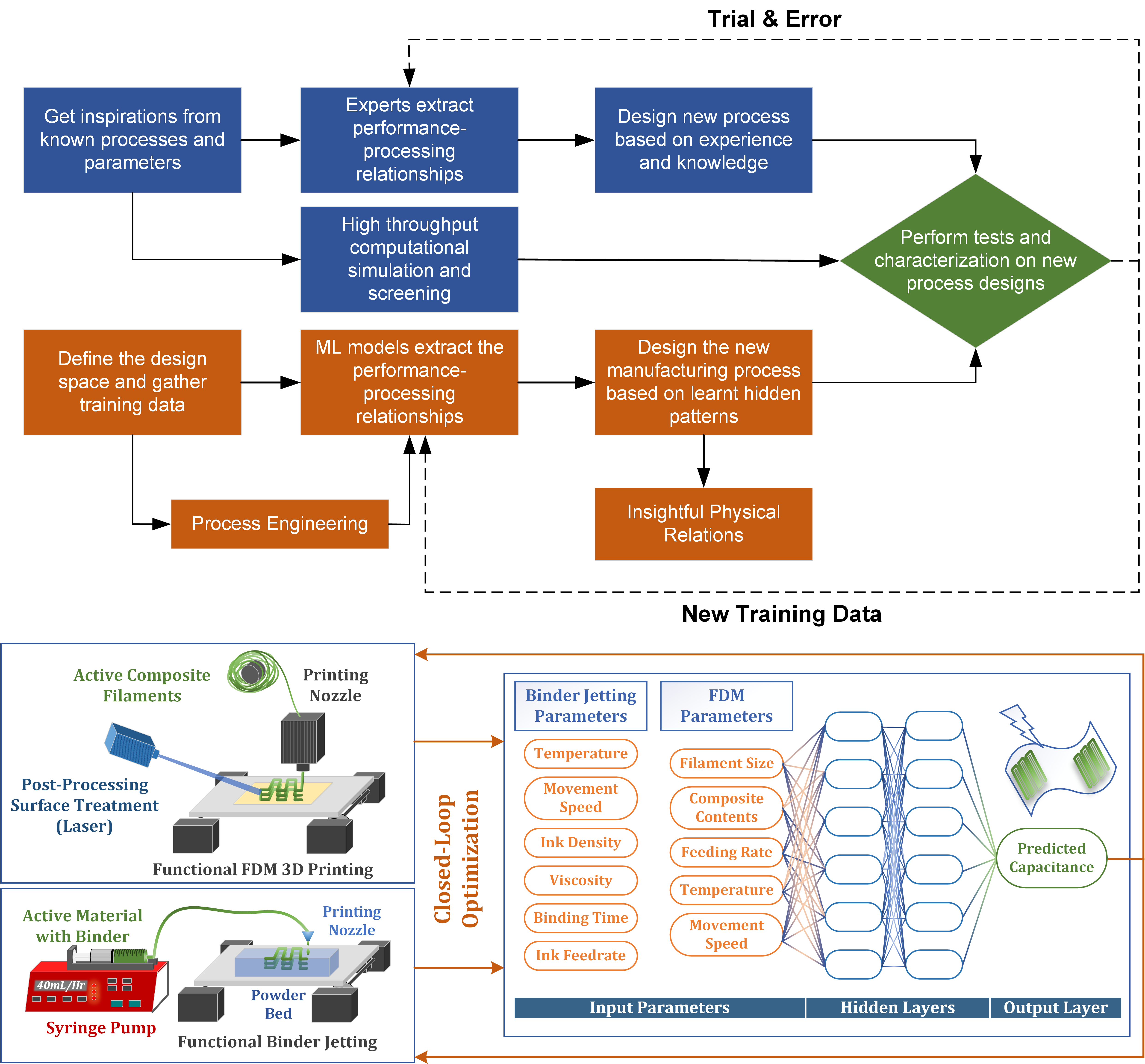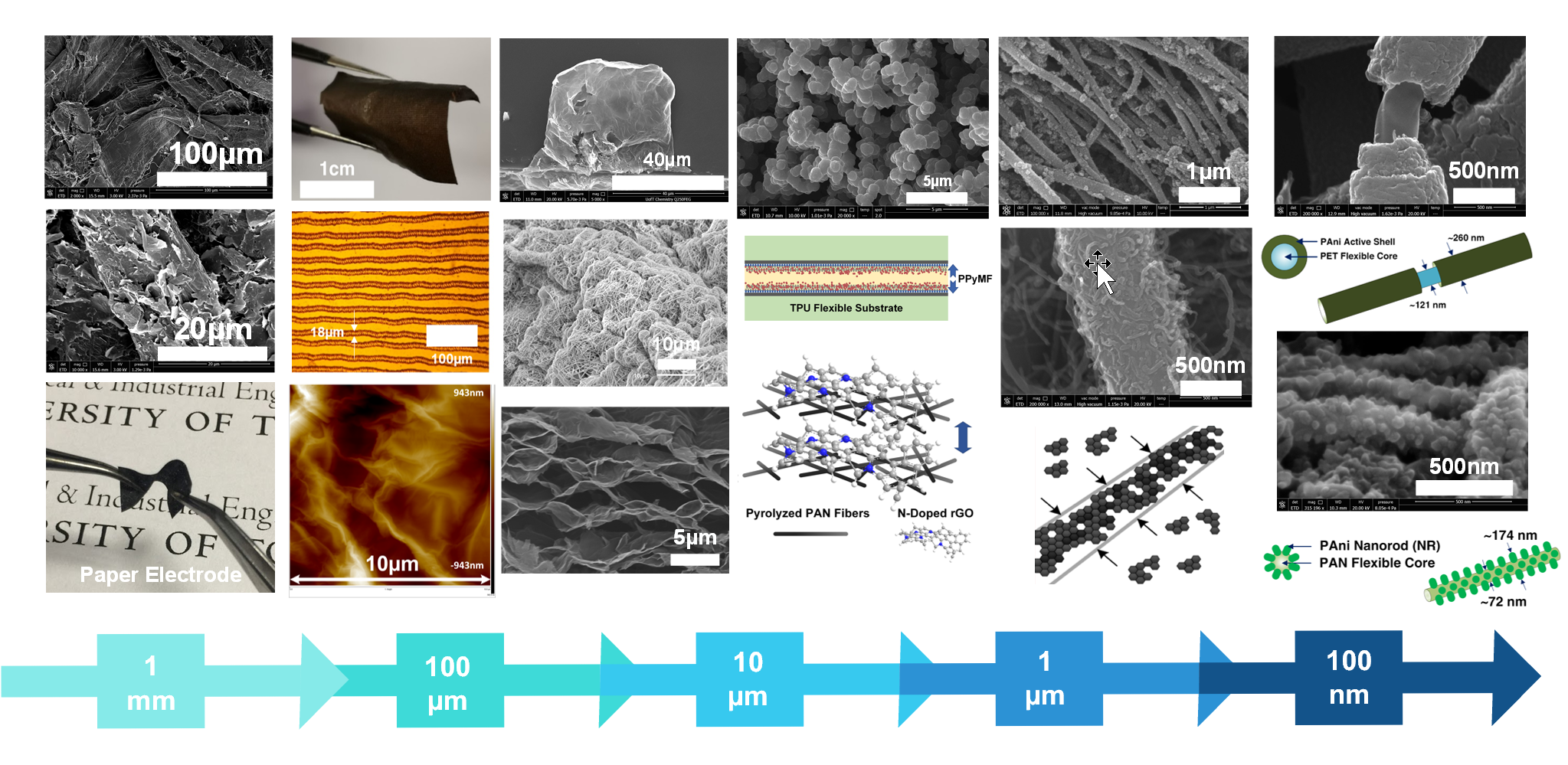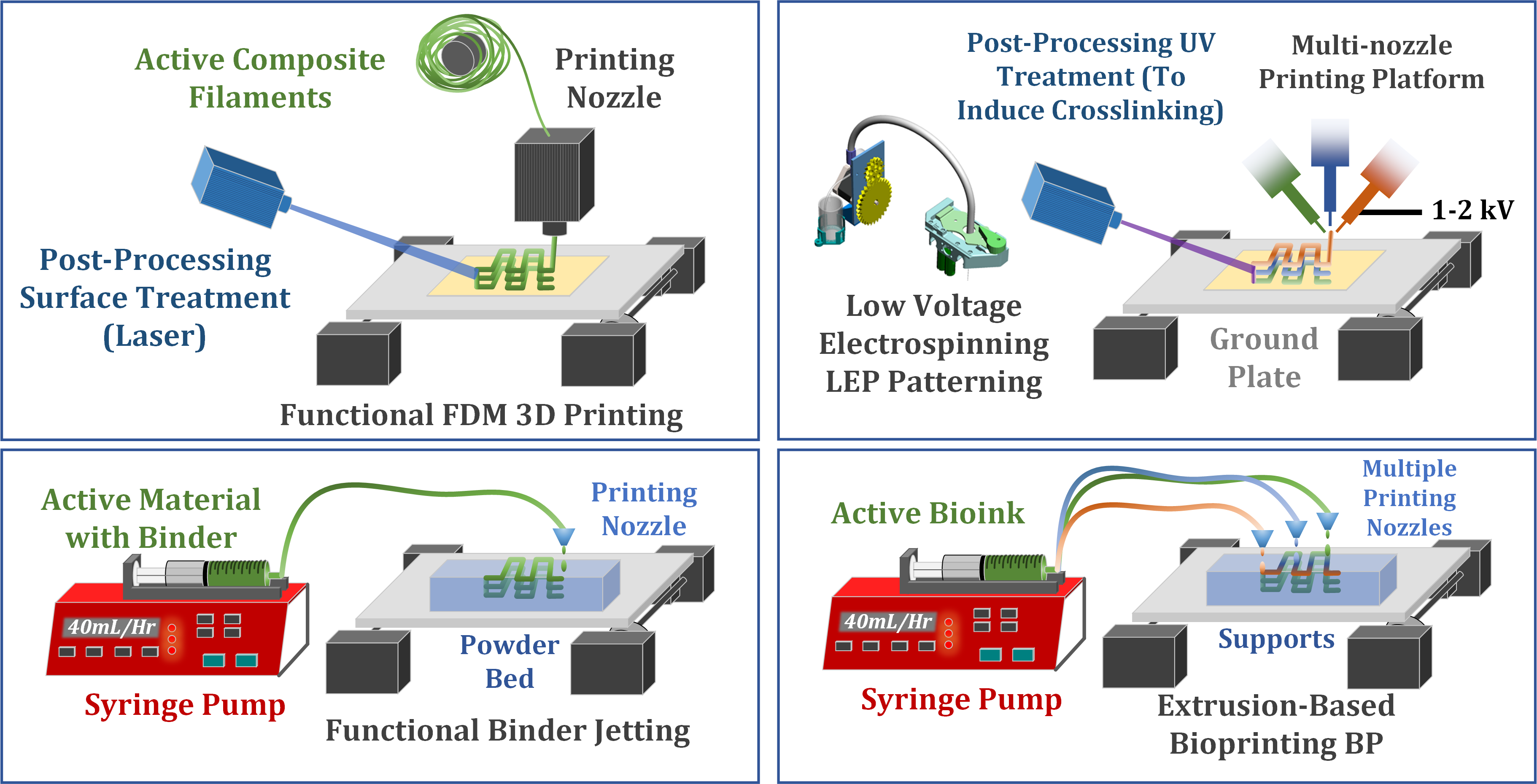NEWS ALERT
Establishing the Data-Driven Advanced Manufacturing (D2M) Lab at Western University
I am very excited to share that I will be joining the Department of Mechanical and Materials Engineering at Western University as an Assistant Professor this summer. Looking forward to creating the next-gen hierarchical high-performance functional materials using artificial intelligence.

Intersection between Machine Learning & Materials Science
Optimizing Advanced Manufacturing with Machine Learning
This proposed research program situates at the intersection between advanced manufacturing and material informatics. By using machine-learning, a tool within the artificial intelligence (AI) space, significantly improved material functional performance, along with optimized processing parameters, can be realized without the need for excessive computing power. Hidden fundamental relations between the device performance and fabrication parameters can potentially be revealed and further predictions on product quality and performance can be made.


Shrinking the Scale Bar
Engineering 3D Micro- to Nano-Scale Material Architecture
My research interests are especially on the development and surface modification of nanoscale polymer fibers using carbon-based nanoparticles combined with conductive polymers for optimized energy performance. Without jeopardizing the intrinsic flexibility of the fibers, the surface modification allows more efficient transfer of charges, leading to possibilities of integrating energy sources for wearable biomedical devices and electronics alike.
Functional Devices 3D Printing
Additive Manufacturing of Functional Devices for Energy Storage
Functional 3D printing for energy storage electrodes have received significant research attention. With the successful implementation of the fused deposition modelling (FDM), binder jetting (BJ), and bio-ink jetting tools for printing optimized active composite inks and precursor materials, such as activated carbon and carbon aerogels, to construct supercapacitor cells. The 3D-printed supercapacitor with different geometries can be beneficial in creating optimal electrode-electrolyte interface that allows for improved reaction sites for charge transfer to occur, leading to an increased charge storage capability, while maintaining desirable mechanical properties.
